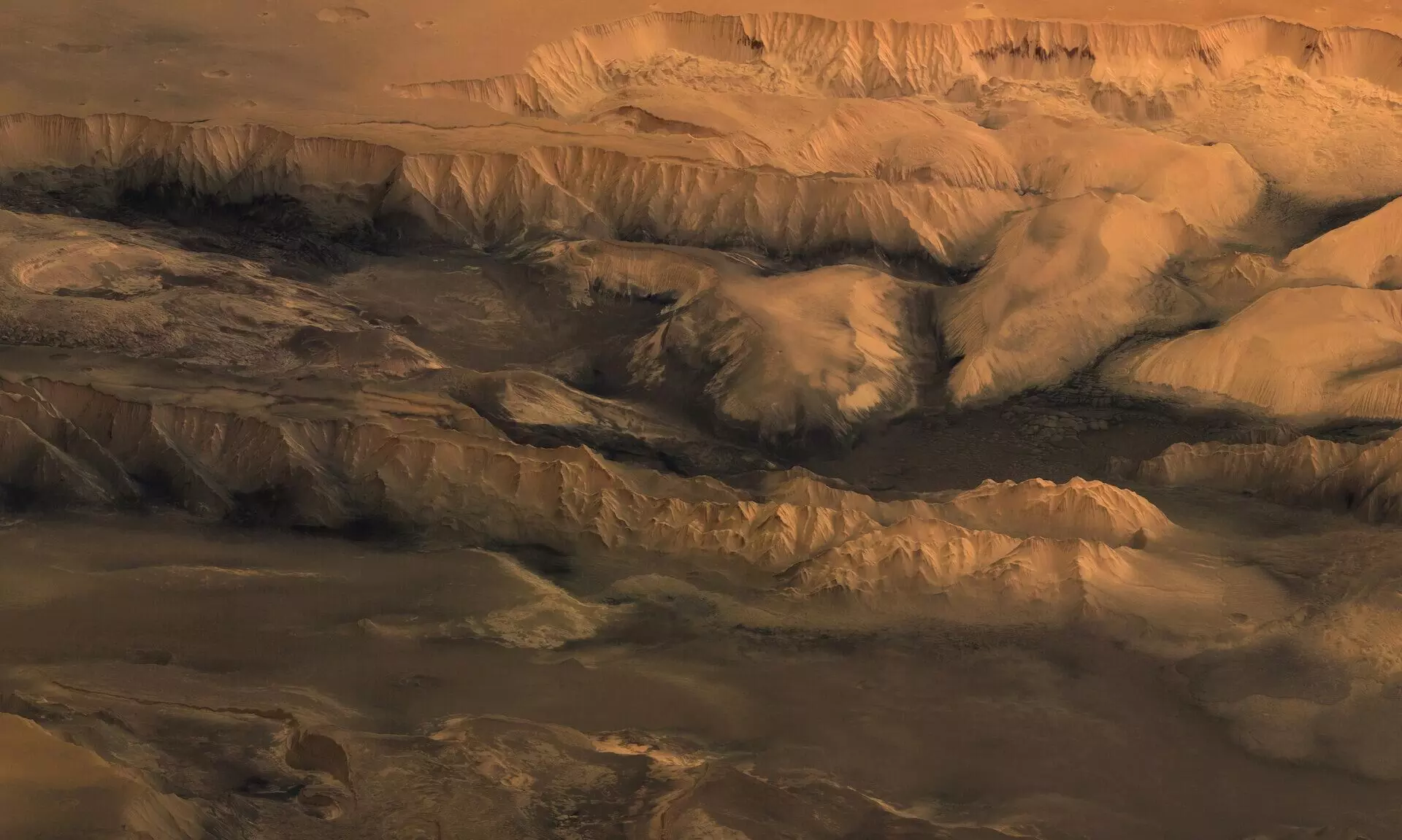
Largest canyon in our solar system found on Mars: ESA
text_fieldsImage credit: ESA
Martian Valles Marineris is being hailed as the largest system of canyons in our solar system by ESA.
The European Space Agency's Mars Express orbiter has captured several images of the geological feature on the red planet. According to experts, it makes every other terrestrial analogue look small.
The Valles Marineris is 4,000 km long, 200 km wide, and up to 7 km deep. The largest canyon on Earth, the Grand Canyon in Arizona, USA, is less than 450 km long, 16 km wide, and 2 km deep.
The Mars Express has photographed two trenches in the western Valles Marineris - the 840 km-long Ius Chasma and the 805 km-long Tithonium Chasma. The images show that the top of the Tithonium chasma is covered in darker sand that is likely to have come from the nearby Tharsis volcanic region.
The ESA also thinks a recent landslide has taken place in the canyon because two 3 km tall mountains surrounding sand dunes around Tithonium have been sharply eroded. Other signs of a landslide are parallel lines and debris piles.
Scientists also found sulphate minerals that are being considered proof that the chasma was once, millions of years ago, filled with water.
Experts think the Martian canyon was formed when tectonic plates moved away from each other. The Grand Canyon earth was formed due to erosion by the Colorado River.
ESA wrote on its blog that the gnarly floor of the Ius Chasma is fascinating. "As tectonic plates pulled apart, they appear to have caused jagged triangles of rock to form that look like a row of shark teeth. Over time, these rock formations have collapsed and eroded."























